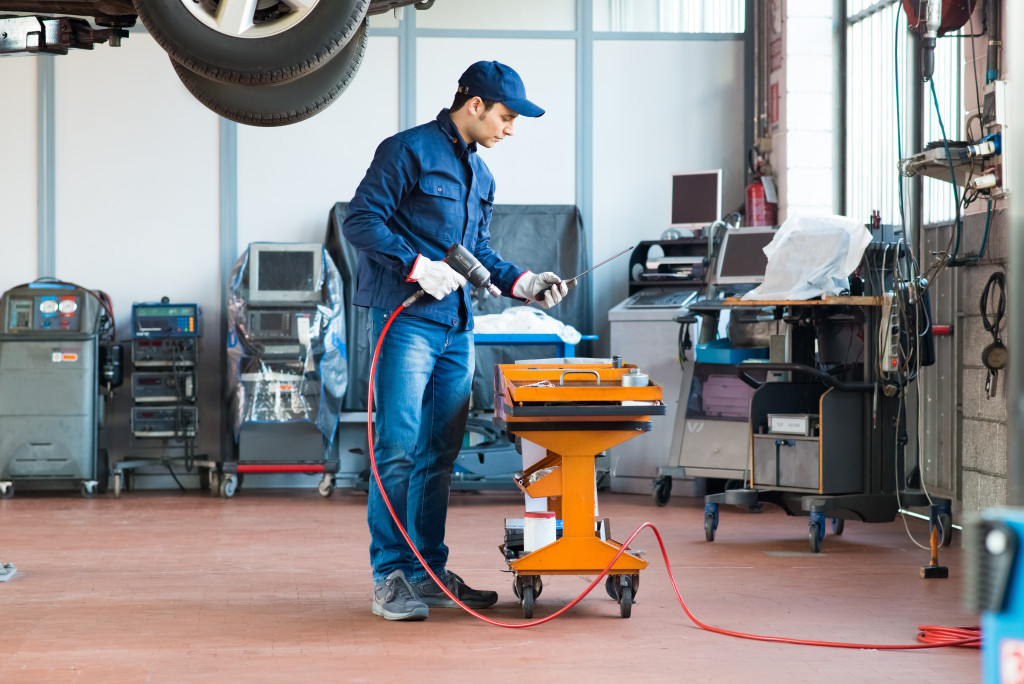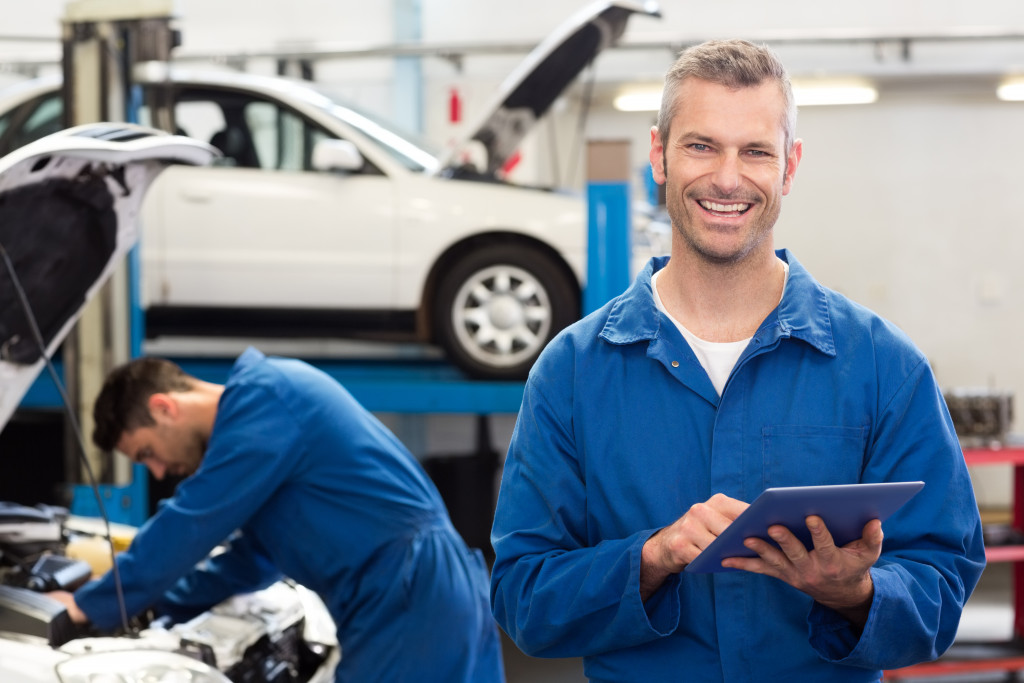- Modern repair shops adapt to electric vehicles, employing energy-efficient practices like solar panels.
- Eco-friendly products, including biodegradable cleaners and non-toxic lubricants, are used in automotive repairs.
- Implementing green technology, like renewable energy sources, is evident in some repair facilities.
- Automotive innovation plays a key role in achieving a sustainable and efficient future.
- Advancements in automotive services enhance vehicle performance and contribute to an enduring relationship with driving.
In an era where cars are not just modes of transportation but genuine investments, the quest for optimal vehicle performance has never been more significant. From your trusty old sedan to the latest electric car, owners constantly seek ways to extend their vehicle’s life span, ensure safety, and boost efficiency and power. Fortunately, there have been groundbreaking advancements in the automotive service industry that cater to these needs, paving the way for improved performance, cost-efficiency, and enhanced driving experiences.
This article will dive deep into the genesis and impact of these innovations, shedding light on how they reshape the automotive maintenance landscape.
The Evolution of Automotive Services
Gone are the days when a car mechanic’s toolkit was primarily composed of a wrench and a screwdriver. The automotive industry has evolved dramatically from labor-intensive, trial-and-error repair methods to cutting-edge tools and sophisticated diagnostic technologies. These changes have redefined the standards of what it means to maintain a high-performance vehicle.
Traditional Methods of Vehicle Maintenance
Centuries ago, when the human touch was the primary source of labor, automotive care was a rudimentary and time-consuming endeavor. Mechanics relied on intuition and mechanical knowledge to diagnose and repair issues, often leading to inaccuracies and prolonged service times.
The Onset of Advanced Automotive Tools and Techniques
Enter the modern era, and alongside it, the introduction of highly precision tools – think ultrasonic cleaners, computerized systems, and specialized engine analyzers. These advancements necessitated a shift towards more specialized training, as technicians now had to be proficient in mechanical and technological skills.
Impact of Technological Advancements on Auto Repair Industry
Today’s auto repair industry is a testament to how technology has revolutionized how vehicles are serviced. Computer diagnostic programs, hydraulic lifts, and robotic arms that can handle the most tedious tasks with finesse have expedited the repair process and significantly reduced the margin of error. Advanced auto repair equipment are often accompanied by interactive software programs that assist technicians in identifying and resolving complex issues.

How Innovations in Automotive Services Improve Vehicle Performance
These technological leaps are not just novelties but integral to the core of vehicle performance enhancement, providing scale and precision like never before.
Enhanced Diagnostic Capabilities
The most crucial aspect of any repair process is accurately diagnosing an issue. With the advent of OBD (On-Board Diagnostics) systems and other state-of-the-art equipment, modern diagnostics are akin to the medical imaging of cars – revealing hidden problems before they break on the highway.
Precision in Repairs
Once the issue is identified, tools like CNC machines for engine-block machining and laser wheel alignment systems ensure that repairs are conducted to the highest standard of precision, which is essential for the intricate systems within a vehicle to function optimally together.
Increased Efficiency and Speed of Service
These innovations significantly reduce customer wait times in an age where time is money. Integrated workstations and automated stock systems mean less time searching for parts and more time dedicated to actual repairs.
Extension of Vehicle Lifespan
The cumulative effect of these advancements translates to a longer lifespan for your vehicle. The precision ensures parts aren’t subjected to undue stress and are replaced or repaired efficiently, thus extending their years of service.
Sustainability and Eco-Friendliness in Modern Automotive Repair
As the world becomes more environmentally conscious, so does the automotive industry. The push for eco-friendly practices has led to significant developments in this field as well:
Use of Recycled Materials
Many modern repair shops have used recycled materials in their processes. This reduces waste and minimizes the strain on natural resources, contributing towards a greener planet.
Energy-Efficient Practices
With the rise of electric and hybrid cars, repair shops have also had to adapt to cater to these vehicles’ unique needs. This has resulted in the implementation of energy-efficient practices such as using solar panels or regenerative braking technology.
Eco-Friendly Products
In addition to utilizing recycled materials, modern repair shops also use eco-friendly products for repairs and maintenance. This includes biodegradable cleaners, non-toxic lubricants, and eco-friendly paints, reducing the environmental impact of automotive repair.
Implementation of Green Technology
Some repair shops have gone further by implementing green technology in their facilities. This can include using renewable energy sources for power or utilizing water collection systems to minimize water usage.
The automotive industry’s commitment to innovation is admirable, but it’s crucial in pursuing a more efficient and sustainable future. With the advancements in automotive services, we are not merely maintaining our vehicles; we are enhancing their performance and ensuring they remain dependable assets in our lives.
For automotive enthusiasts, these changes are like the turning of a new chapter in the book of automotive evolution. They allow us to keep rolling, discovering, and falling in love with the open road. The next time you’re behind the wheel, remember that the innovations in the automotive industry are not just under the hood—they’re in every mile you travel.

